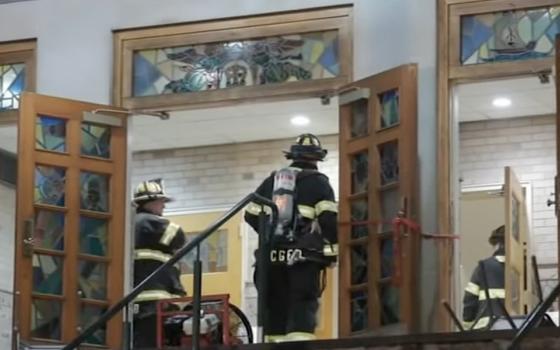I am very thankful to NCR for keeping alive the debate, among other things, on the liturgical reform of the council after 50 years from the opening of Vatican II. I feel called to intervene, not just because my latest book, True Reform: Liturgy and Ecclesiology in Sacrosanctum Concilium, was mentioned in Fr. Ron Schmit's recent article, but especially because of the provocative piece of Michael Sean Winters in response to that article, "Contra Fr. Schmit." There are indeed several statements in Winters' article that give voice to some misunderstandings regarding the relationship between the history of the Catholic church and the liturgical reform of the council.
First, in his article, Winters affirms correctly that the old rite "has a certain beauty that is undeniable." As one who took five years of Latin and Greek in high school in Italy, I cherish very much the ability to understand those languages, but I do not necessarily think the use of ancient languages makes a rite more beautiful. One simple fact is now forgotten: Latin had become a "sacred language" for the Roman Rite of Catholic liturgy only in the post-Trent period -- a "sacralization" that had nothing to do with more ancient times, when Latin had become for the church of the West the unifying idiom understandable for most Christians. A "resacralization" of Latin as the true liturgical language now, in the 21st century, would make even less sense than it did in the 17th and 18th centuries.
Secondly, in the article, there is the wish "to make the case for liturgical diversity." This is exactly one of the rationales of the liturgical reform -- inculturation. That is why the previous canonical situation, granted by John Paul II, for the advocates of the old rite made more sense. The advocates of the old rite today deny the idea that liturgical pluralism is legitimate. If and when they say something close to that, they do it just because it is a tactical use of the opportunities given by "Vatican II" in order to deny the validity of Vatican II in the long run.
Thirdly, Michael Sean Winters affirms that "in our culture, which is drowning in the horizontal, taking time to experience a more purely vertical experience of liturgy is not entirely a bad thing." That may be true. But it is always astonishing, for church historians, to see how easily Catholics have accepted the imperial-monarchical principle as essentially "consubstantial" with Christianity, and how easily they have rejected the horizontal-collegial-synodal principle as essentially "democratic"; that is, essentially incompatible with religion and Christianity in particular. The Baroque period seems to be, in our times, something like an ideal type of Catholicism in an essentialist way, "theologized" in virtue of sources that are not the sources of the theological ressourcement.
Lastly, the article assumes that Paul IV "was right to deny those who opposed the Council generally a means of creating dissent within the bosom of the Church. But, that is not the situation now. Those who deny the authority of the Council have left." This is, in my opinion, the most problematic part of the piece. If we look closely at the situation of European and American Catholicism, we have to come to very different conclusions. The most respected Church historian in Italy, Giovanni Miccoli, last year published a book, La chiesa dell'anticoncilio. I tradizionalisti alla riconquista di Roma (published by Laterza), that shows how deeply connected are the advocates of the old rite and some members of the hierarchy who affirm -- sometimes in public and in these very words -- that Vatican II was fundamentally a mistake and that the liturgical reform is the first step in "taking back" the Catholic church. We should not blame those Catholics, especially young students and seminarians, who are led to believe that praying in Latin and in the old rite is "more Catholic." But we cannot afford to believe that the message conveyed to them through a neo-traditional liturgical style has nothing to do with the message they receive, in those same schools and seminaries, about the rest of the teachings of Vatican II: ecumenism, interreligious dialogue, lay ministry in the church, and so on.
[Massimo Faggioli is an assistant professor of theology at the University of St. Thomas in St. Paul, Minn., and author of True Reform: Liturgy and Ecclesiology in Sacrosanctum Concilium (Liturgical Press, 2012), among other books.]




